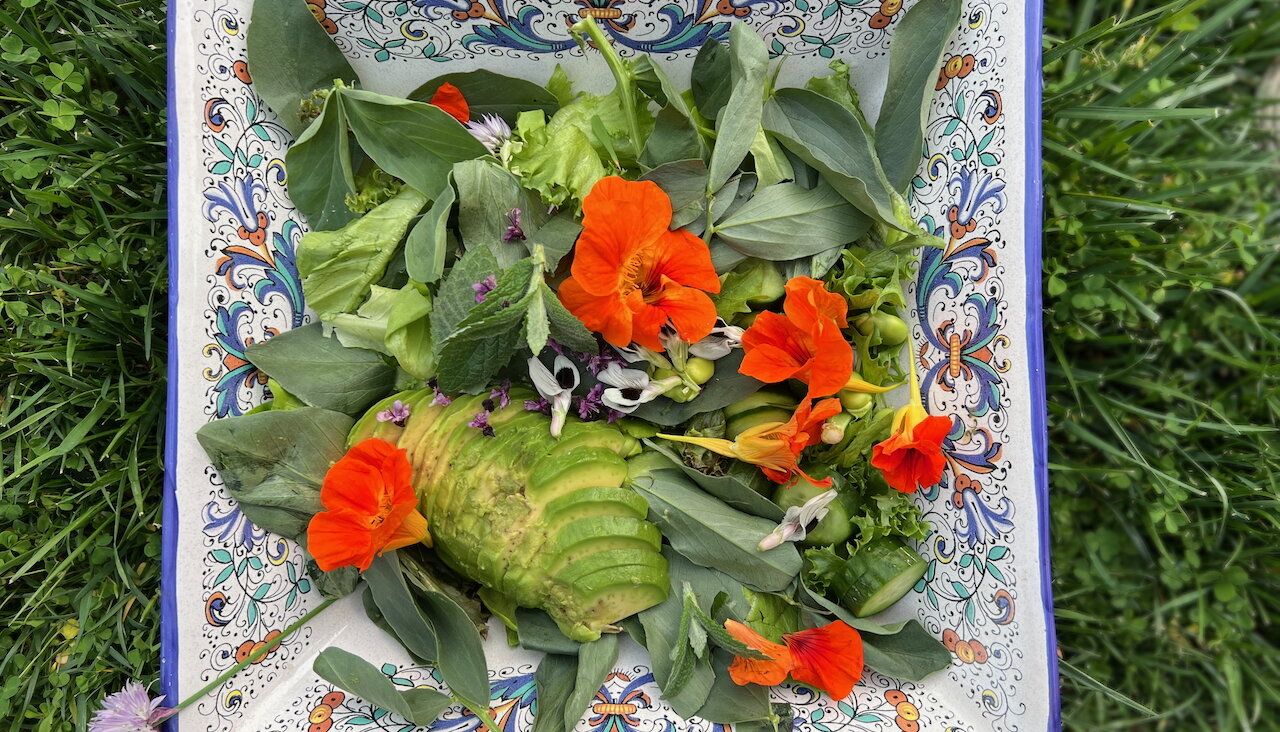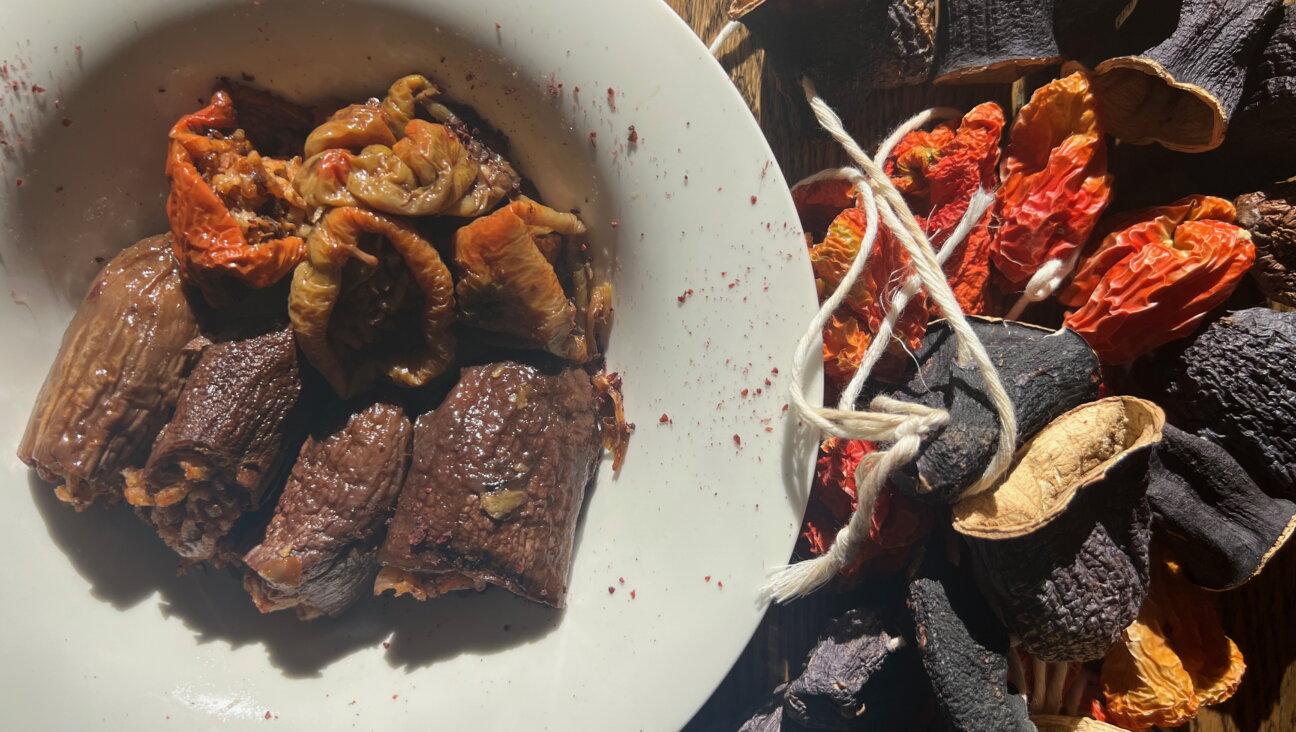A Mexican Jew walks into a bar, and creates her own tequila

Dafne Mizrachi Courtesy of Curamia
There once lived a woman in Guadalajara who was so beautiful that she was known as La Mujer Mas Bella — The Most Beautiful Lady. But it was her inner beauty that inspired her granddaughter, Dafna Mizrahi, to make tequila.

Dafne Mizrachi Courtesy of Curamia
“Everyone knew my grandma because of how beautiful she was, but more how internally beautiful she was,” Mizrahi said of her mother’s mother, Estela Flores Moreno, who had seven children. “There was always an eighth seat at the table for anyone in need, and extra clothes for anyone who needed it, and she had the biggest heart I ever knew.”
Estela loved tequila, and would have a small glass at the beginning of family meals.
“My grandma was the first person I ever tasted tequila with,” Mizrahi said. “We would go and have family lunches or dinners together and she would always ask for a little bit of tequila to start her meal.” Most people shoot it down or mix it with juice and sugar, Mizrahi said. “But in our traditions as Jews it’s like having a sip of wine on Shabbat.”
The press launch of Mizrahi’s new tequila, Curamia, took place in the private bar room of the lower Manhattan outpost of P.J. Clark’s. Mizrahi recommended that we first sip the Curamia neat, the way her grandmother drank hers. She then mixed it into two cocktails created for the occasion. One, called Estela, was a light, bright drink featuring fresh citrus juices and sparkling water, served in earthenware mugs handmade by the women at the distillery.
The second, called La Piña, was a frothy, pineapple-juice-based concoction served straight up. Lovely to look at and delicious to drink, it captured everything about the festive moment.

Curamia Tequila By Liza Schoenfein
Born in the Mexican state of Jalisco, not far from the blue agave fields and distilleries of Tequila, Mizrahi attended the Jewish school Colejio Israelita in Guadalajara from kindergarten through elementary school, where classes were in Hebrew for half the day and Spanish for the other half. Her family has both Ashkenazic and Sephardic roots, and they went to synagogue every Friday.
Estela may have sparked Mizrahi’s interest in tequila, but it was her paternal grandmother, Soledad Mizrahi Alvoa, a wedding dress designer and passionate cook, who inspired her to become a chef.
“I was the child that cooked for all the Jewish holidays with my grandma,” Mizrahi said. “I remember preparing for the holidays with my grandmother for four days. So here it comes full circle, where I do the tequila for my maternal grandma and my paternal grandma I went to culinary school for. That generosity and authenticity is what I grew up with.”
Mizrahi began thinking about starting her own tequila brand a few years ago, but put it aside until her work in the hospitality industry dried up at the beginning of the pandemic. That’s when she connected with co-founder Melissa Del Savio, and the project took off.
“We got to focus on it during COVID, hence the name Curamia, which means ‘my cure.’ And it actually was my cure during COVID. It was a project that kept us busy and kept us moving forward.”
The company they conceived is almost entirely female-founded, female-financed, and female-staffed, including the distillery workers, 95% of whom are women.
“If I went back from the day I was born, the big forces that have guided me to where I am today are all females,” Mizrahi said. “For me it was to honor those women in my life by coming up with a beautiful product that showcases my culture.”
Mizrahi’s mother, who attended the Curamia launch party with her daughter, was another of those women who steered her toward a food-and-drink-focused future, if inadvertently.
A dancer who began performing with the American Ballet Theater when she was 14 years old, and who later opened her own dance studio in Mexico, Luisa Fernanda Schwartzman brought MIzrahi to New York every summer when she traveled there to dance or teach. She introduced her daughter to restaurateur Philip Scotti, who was then at Fiorello’s Café opposite Lincoln Center and who now owns PJ Clark’s.
Mizrahi ended up working for Scotti every summer, learning every aspect of the restaurant business, and ultimately attending the Culinary Institute of America.
Curamia comes in a sleek, clear glass bottle with a sunny, bright orange label that offsets the crystal-clear blanco tequila. (Reposado, añejo, and cristalleno — an ultra-refined añejo — are in the works.) The product is made with an emphasis on sustainability, in one of only a few distilleries that uses a diffuser, which reduces waste by extracting almost all the juice out of the piña, the bulb of the blue agave plant. What is left after pressing is put back into the soil as fertilizer.
Curamia is exceptionally smooth, almost delicate, with citrus and herbal notes derived from the dark, volcanic soil of the Tequila lowlands. Mizrahi uses the term terroir, which generally refers to the influence of land, soil, topography, climate, and other factors on the flavor and character of wine.
“It’s our land, our traditions, our terroir,” she said, “it plays the same role with tequila. I’ve gotten to know tequila differently. I’ve learned to appreciate it and respect it and honor the spirit of tequila, which is the spirit that I have myself. It’s the identity of Mexico.”
Mizrahi sums up what she’s learned from her grandmothers, and how it applies to her brand-new business: “You have to be authentic, show your heart, be there for people, and people will remember you.”
The Estela Cocktail
Courtesy of Curamia Tequila

The Estela cocktail By Liza Schoenfein
Coarse salt, for optional rim
1½ ounces Curamia Tequila
½ ounce fresh lime juice
½ ounce fresh lemon juice
½ ounce fresh grapefruit juice
2 ounces club soda
Lemon, lime and orange wedge for garnish
If salting the rim of the glass, dampen it and dip into a plate of salt.
Mix the liquid ingredients together and serve in the glass over ice.
The Forward is free to read, but it isn’t free to produce

I hope you appreciated this article. Before you go, I’d like to ask you to please support the Forward.
Now more than ever, American Jews need independent news they can trust, with reporting driven by truth, not ideology. We serve you, not any ideological agenda.
At a time when other newsrooms are closing or cutting back, the Forward has removed its paywall and invested additional resources to report on the ground from Israel and around the U.S. on the impact of the war, rising antisemitism and polarized discourse.
This is a great time to support independent Jewish journalism you rely on. Make a gift today!
— Rachel Fishman Feddersen, Publisher and CEO
Support our mission to tell the Jewish story fully and fairly.
Most Popular
- 1

Culture Cardinals are Catholic, not Jewish — so why do they all wear yarmulkes?
- 2

Fast Forward Ye debuts ‘Heil Hitler’ music video that includes a sample of a Hitler speech
- 3

News School Israel trip turns ‘terrifying’ for LA students attacked by Israeli teens
- 4

Fast Forward Student suspended for ‘F— the Jews’ video defends himself on antisemitic podcast
In Case You Missed It
-

Yiddish קאָנצערט לכּבֿוד דעם ייִדישן שרײַבער און רעדאַקטאָר באָריס סאַנדלערConcert honoring Yiddish writer and editor Boris Sandler
דער בעל־שׂימחה האָט יאָרן לאַנג געדינט ווי דער רעדאַקטאָר פֿונעם ייִדישן פֿאָרווערטס.
-

Fast Forward Trump’s new pick for surgeon general blames the Nazis for pesticides on our food
-

Fast Forward Jewish feud over Trump escalates with open letter in The New York Times
-

Fast Forward First American pope, Leo XIV, studied under a leader in Jewish-Catholic relations
-
Shop the Forward Store
100% of profits support our journalism
Republish This Story
Please read before republishing
We’re happy to make this story available to republish for free, unless it originated with JTA, Haaretz or another publication (as indicated on the article) and as long as you follow our guidelines.
You must comply with the following:
- Credit the Forward
- Retain our pixel
- Preserve our canonical link in Google search
- Add a noindex tag in Google search
See our full guidelines for more information, and this guide for detail about canonical URLs.
To republish, copy the HTML by clicking on the yellow button to the right; it includes our tracking pixel, all paragraph styles and hyperlinks, the author byline and credit to the Forward. It does not include images; to avoid copyright violations, you must add them manually, following our guidelines. Please email us at [email protected], subject line “republish,” with any questions or to let us know what stories you’re picking up.
















